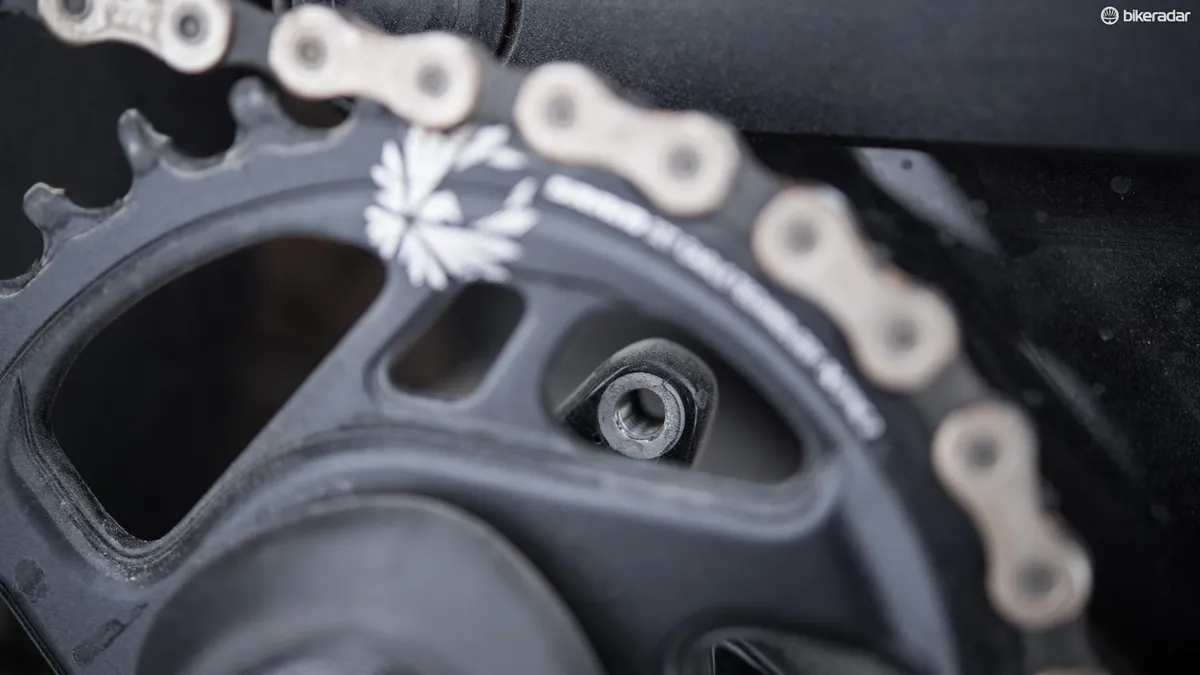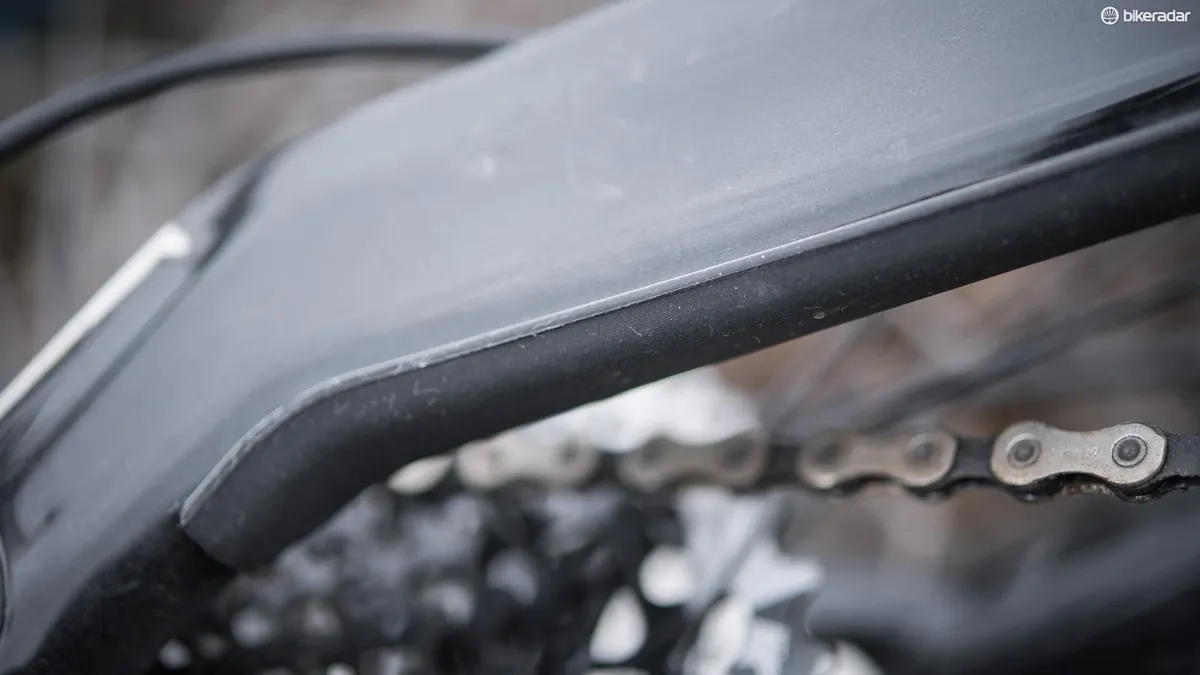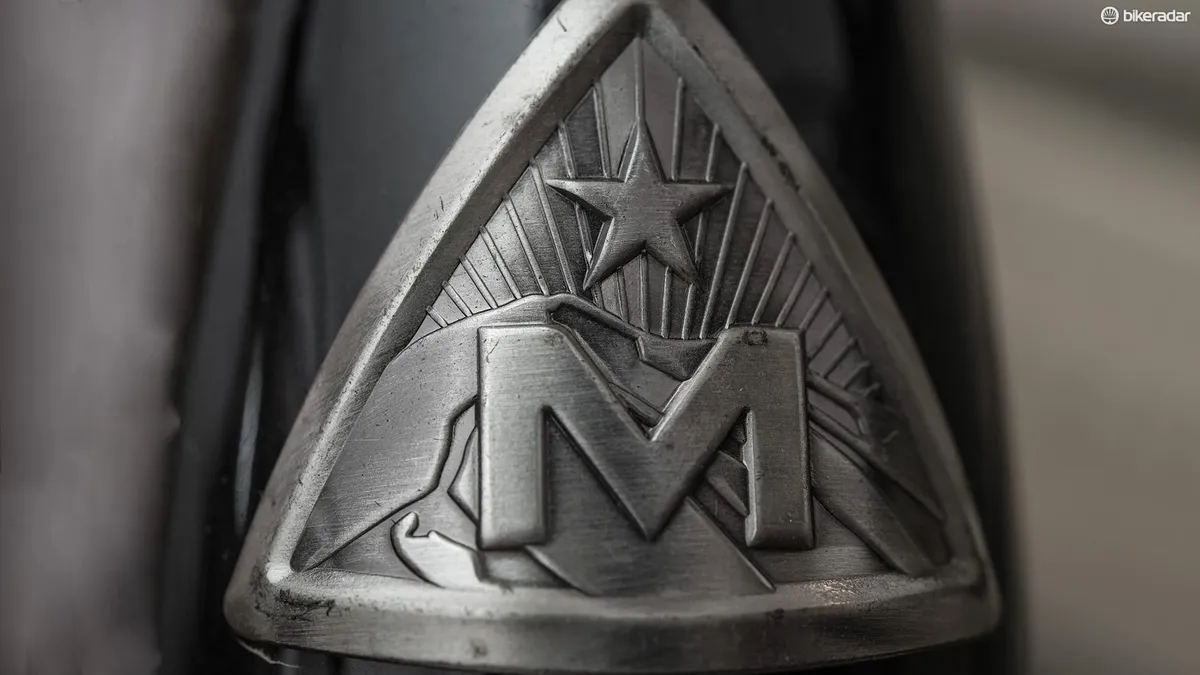As the second model in the Marin range with the rather unique Naild R3act 2 Play suspension system, the 27.5 Mount Vision has quite a lot to prove following the Wolf Ridge 29er’s rather rocky reception back in 2017.
- Polygon Xquarone EX8 first ride review
- Marin Wolf Ridge 9 review
- The ultimate guide to mountain bike rear suspension systems
Tech Editor Alex gives the new Marin a thorough testing in Italy
The latest iteration of the Mount Vision platform sports 150mm of travel front and rear, and is aimed squarely at the all-mountain and enduro markets, rather than trying to be a bike that’s a genre-spanning do-it-all machine like the Wolf Ridge.
That said, Marin is keen to point out that it’s just as capable climbing as it is descending and it should be a great companion no matter what sort of riding you’re going to be doing, including bike park laps and all day epics with gnarly descents.
Marin Mount Vision frame details
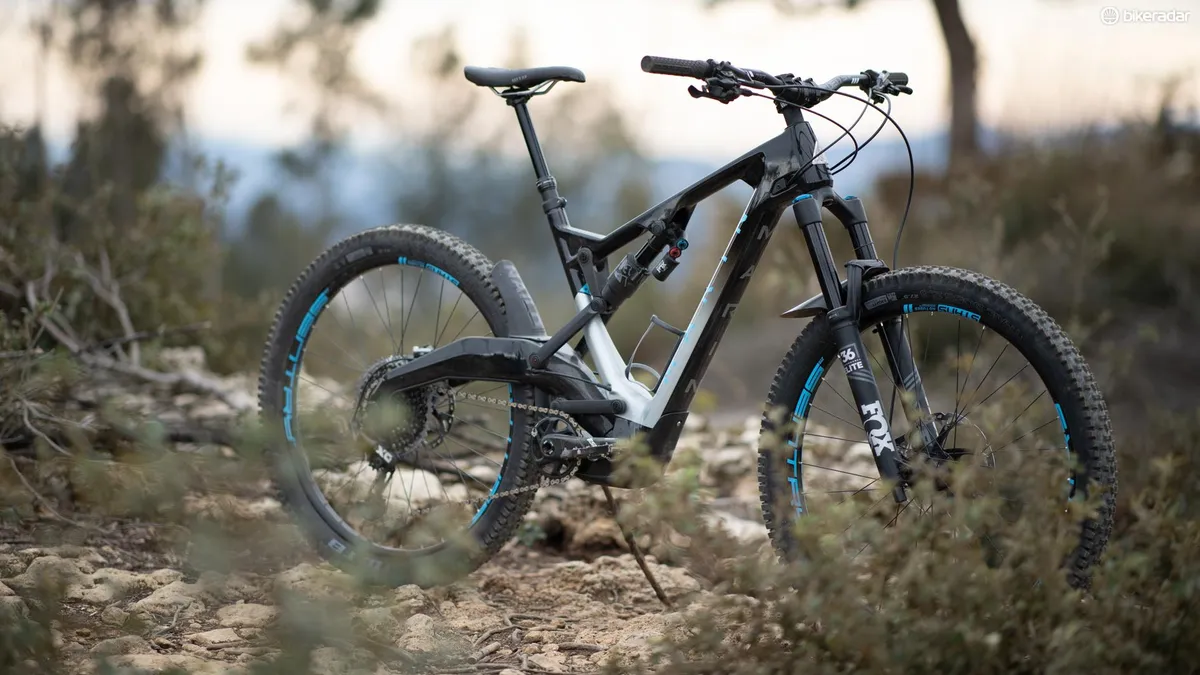
Marin’s latest model looks like a highly-capable machine. It’s made from unidirectional carbon fibre technology, which means, Marin claims, it has the strongest and lightest frame possible.
The three models in the range share the same carbon fibre front and rear ends but the specs change along with the price. The bike comes in four sizes from small to extra-large, with two bottle mounts on the L and XL bikes for the thirstiest of riders.
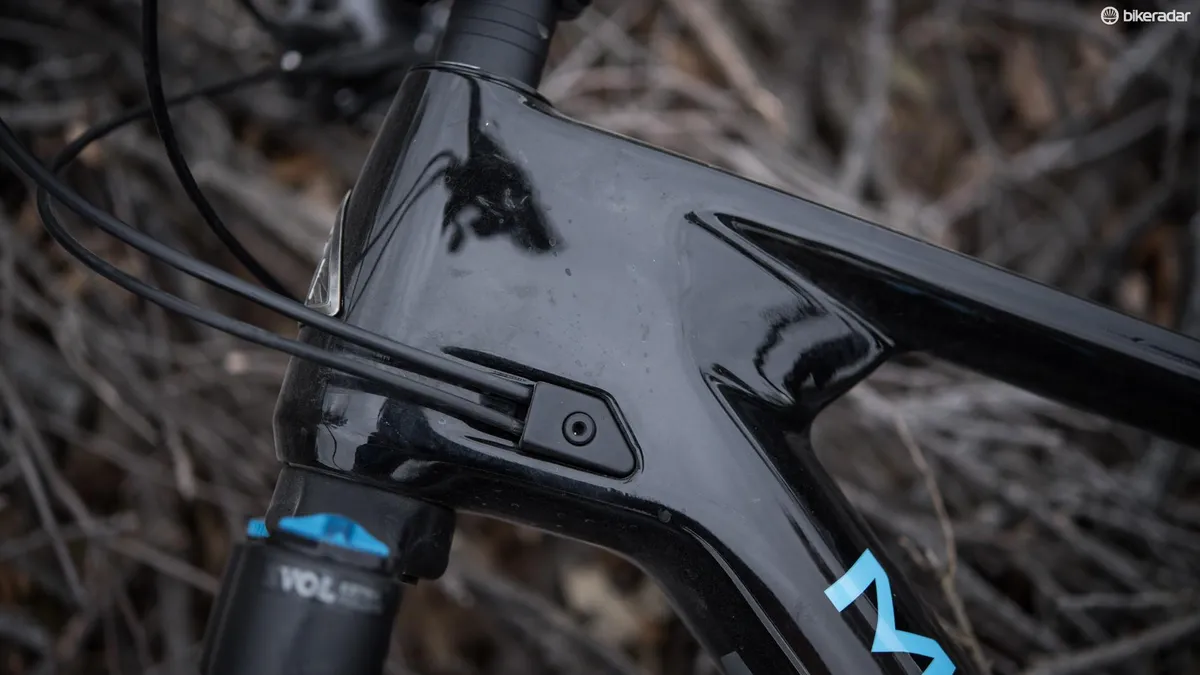
Important figures for the size large include a 471.5mm reach, 1,213mm wheelbase, 420mm chainstays and a 65-degree head angle and 75.1 virtual seat tube angle. These are all modern, although certainly not extreme, figures.
The bike features internal cable routing throughout, a tapered head tube and 148mm Boost rear axle spacing. The press-fit BB92 standard takes care of the bottom bracket.
Each pivot bearing features a small plastic cover over the top of the external hardware to help keep dust, mud and water out for a little longer. It's a nice touch and the cover is easy enough to prise off with your fingers.

The frame has an integrated rear fender that attaches to the swing arm. Marin told us that the use of this mudguard is essential for keeping mud and debris away from the Naild slider. It also said that it is a condition of its warranty — so it’s wise to retain the guard’s protection.
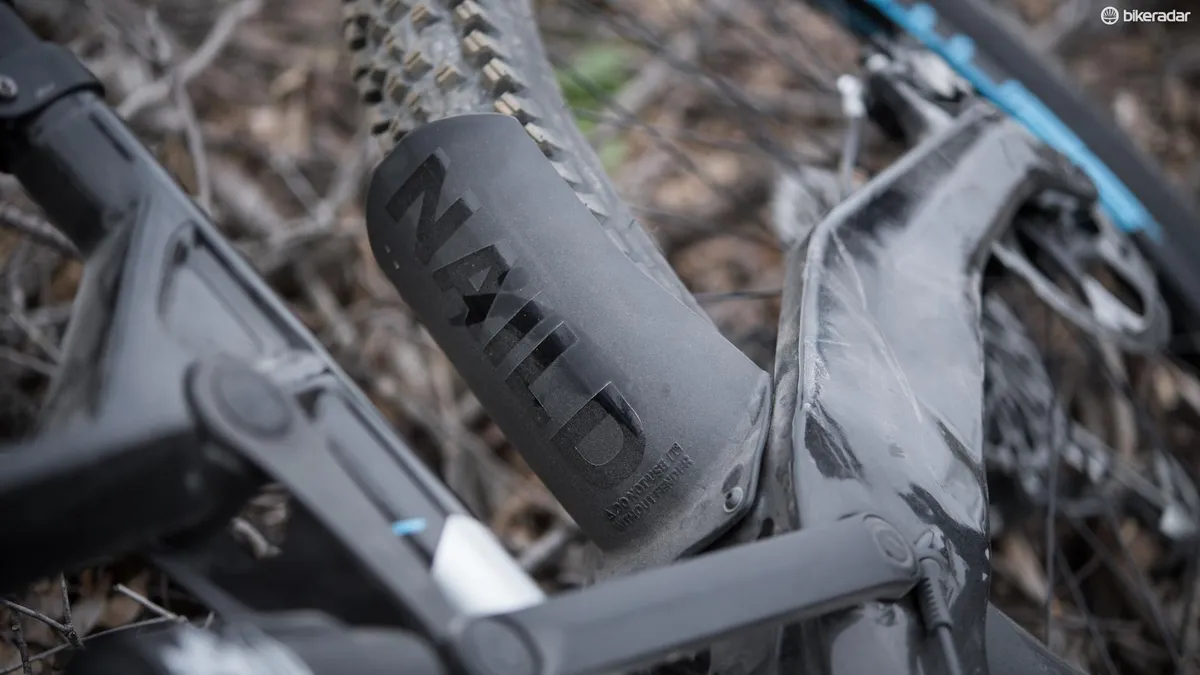
Marin Mount Vision suspension details
At the heart of the Mount Vision’s unique looks, and its most prevalent selling point, is the Naild R3act 2 Play suspension system. It's designed to isolate the rearward shifting of the rider’s mass from the bike’s suspension in a bid to eliminate pedal bob while retaining suspension compliance.
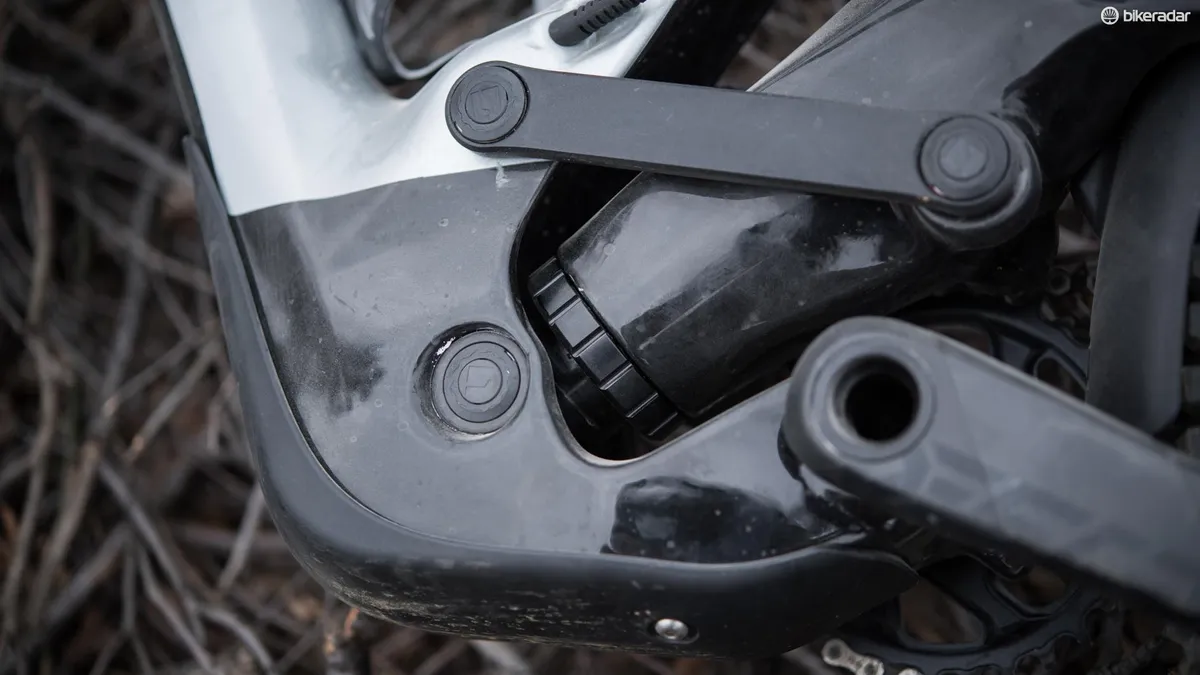
To do this, according to Marin, the ‘slider’, as it's dubbed, extends with an equal but opposite force to the rider’s rearward and backward motion under acceleration. This slider isolates the rider’s mass from the suspension’s ability to absorb bumps.
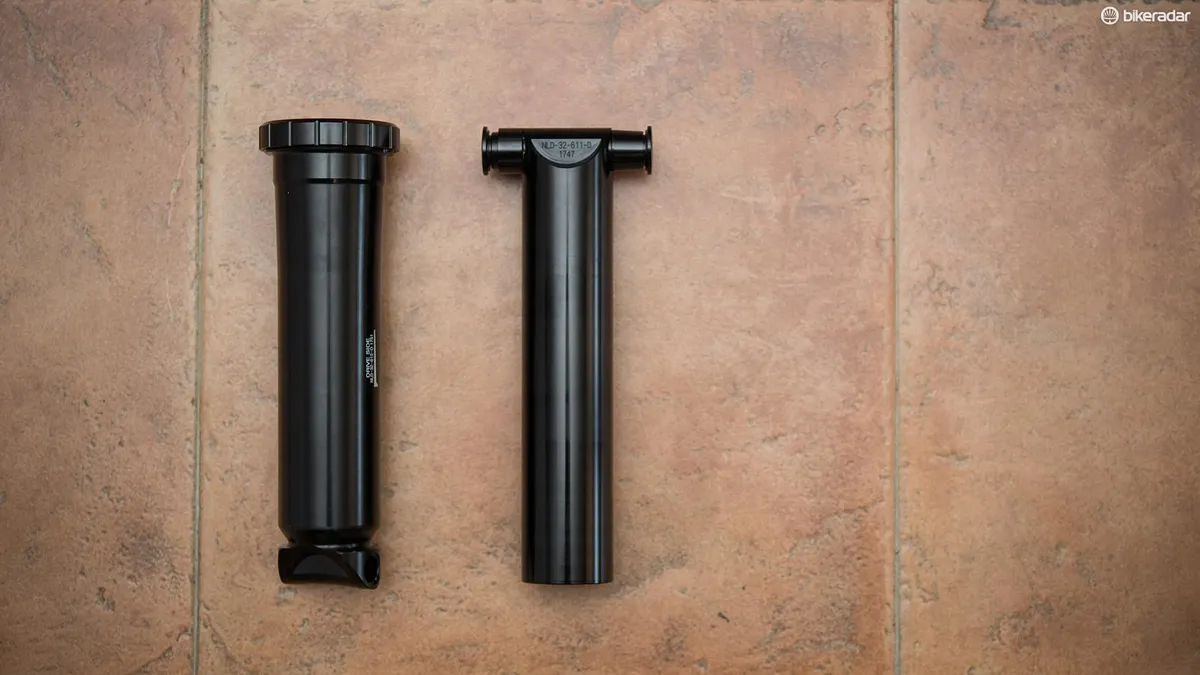
The slider is a neutrally pressurised tube (a small vacuum is created when it extends) that uses a 41mm diameter stanchion. Replacement seals can be bought from Honda motorcycle dealerships, but Marin also carries stock.
The slider is a sealed unit and has a small amount of lubrication oil to keep things running smoothly, but it has no damping or resistance to either extension or compression.
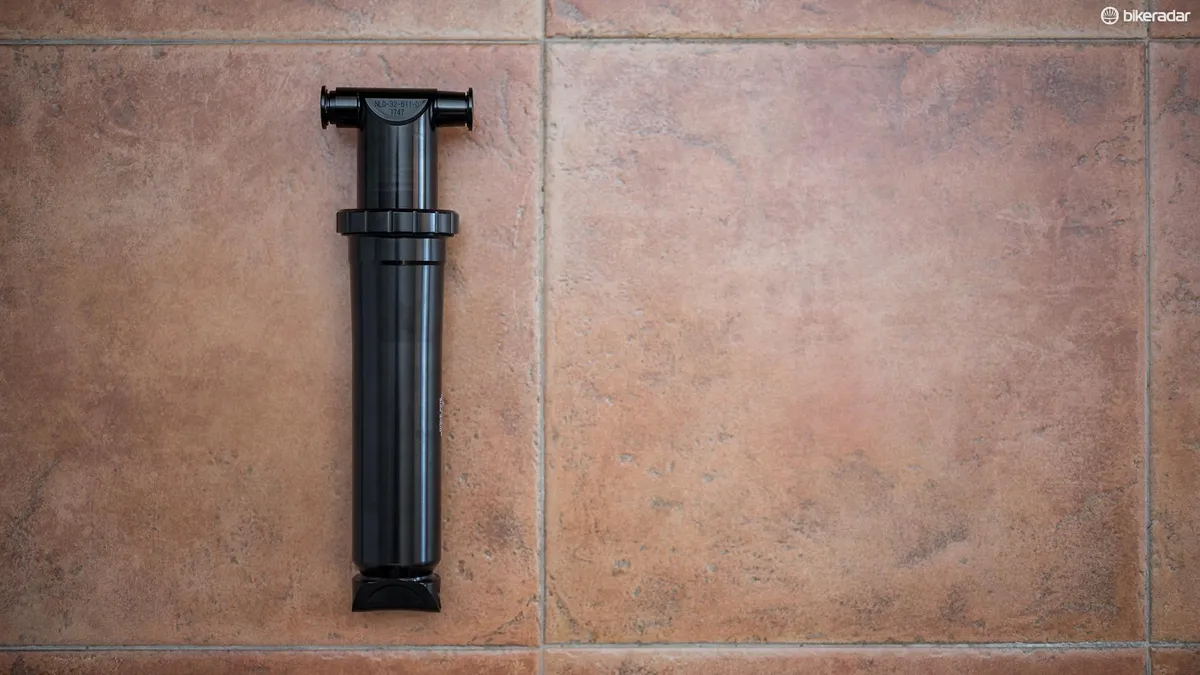
There’s a small bleed nipple on the driveside chainstay pivot to equalise the slider's pressure should you change altitude or if you ride a lot — it's akin to Fox’s bleed valve on the rear of some of its fork lowers.
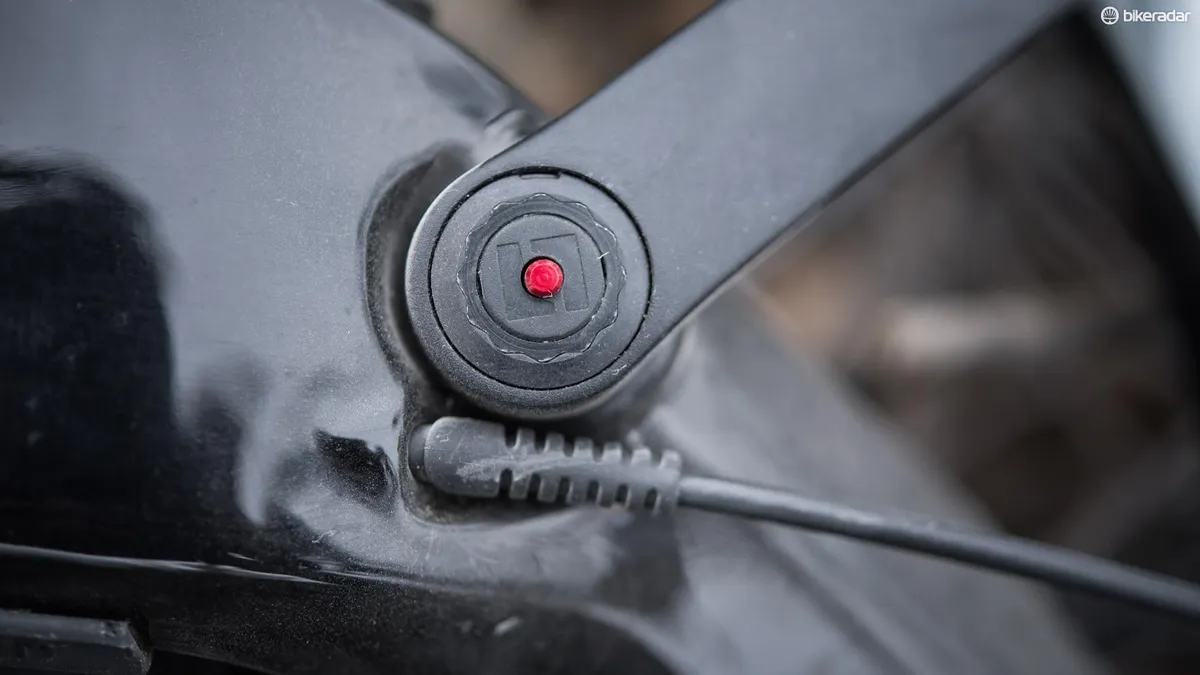
With 150mm of rear wheel travel, which is controlled by a Fox Float X2 Performance rear shock, it certainly looks like it’s ready to take on almost any bump or trail.
Thanks to the bike’s inherent tune, you can run little shock compression damping because it’s only absorbing bumps without having to support the rider's weight at the same time. There isn’t a lockout lever on the X2 shock either, because of this inherent support.
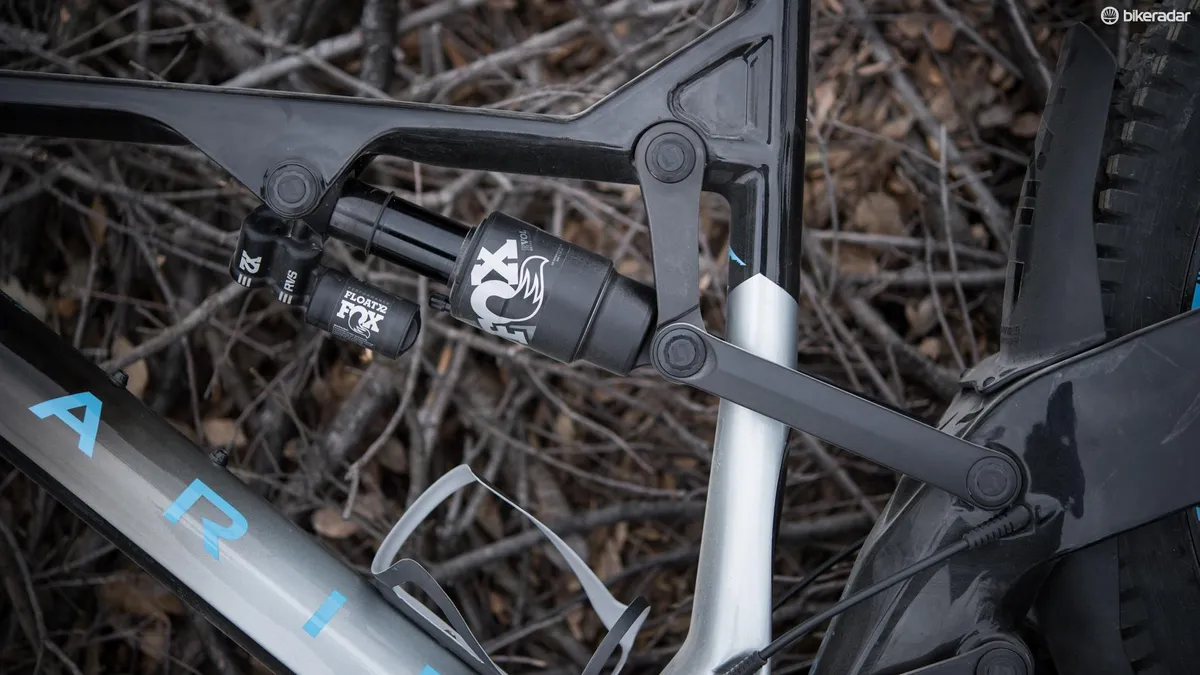
It also features size-specific kinematics. In short, this means that the suspension is tuned differently depending on the bike’s size. The small and medium frames have different kinematics compared to their larger L and XL counterparts that correspond to predicted rider sizes and weights.
We found the Wolf Ridge's back end to be rather flexy, so it's interesting to see that Marin has added an upper link to increase lateral stiffness to the Mount Vision's rear. Marin claims that its system offers unparalleled levels of traction.
Marin says all of this leads to you being able to focus solely on the ride rather than getting bogged down with lock-out levers and constant adjustments.
Marin Mount Vision geometry
Array
Marin Mount Vision 9 kit and specification details
The middle-of-the-range Mount Vision 9 is well specced, and rightly so when you consider the bike’s priced at £6,500 / $6,799.99 / €6,699.
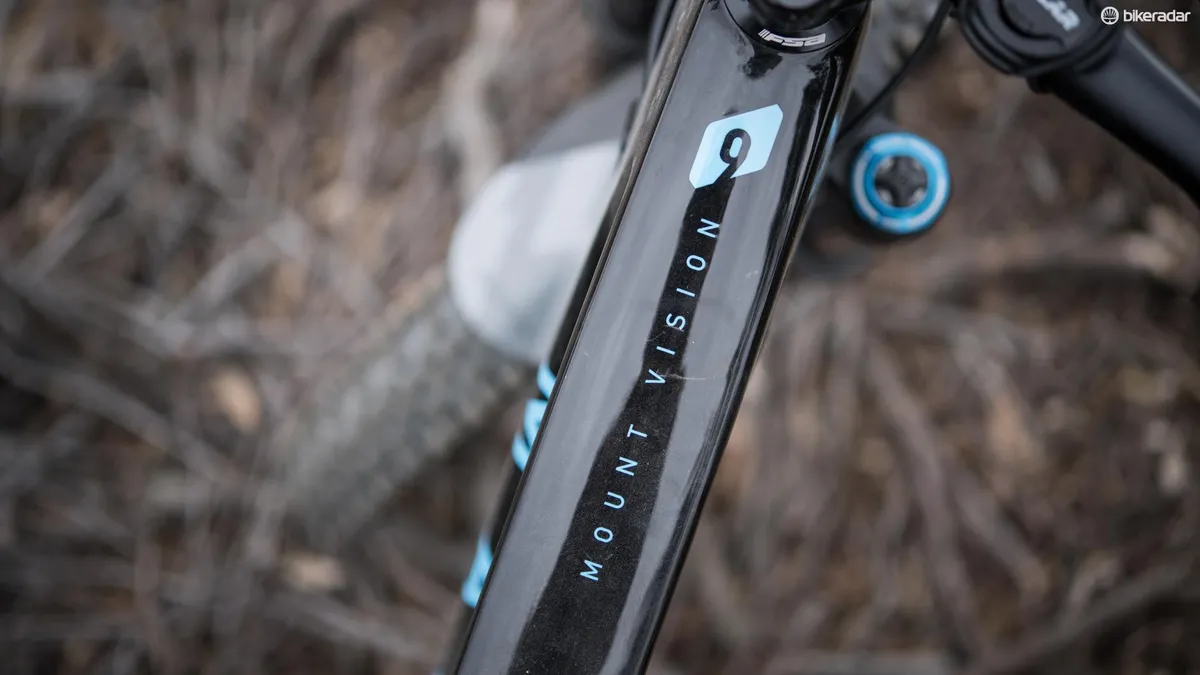
Up front, Marin has specced the awesome Fox 36 Performance Elite with the Grip 2 damper that’s got both high- and low-speed compression adjustment and rebound adjustment. The fork has the longer 44mm offset. You can read more about fork offset in Seb's fork offset test.
There’s a metric trunnion Fox Float X2 rear shock out back that has low-speed rebound and compression adjustment, not that you’ll need them, according to Marin.
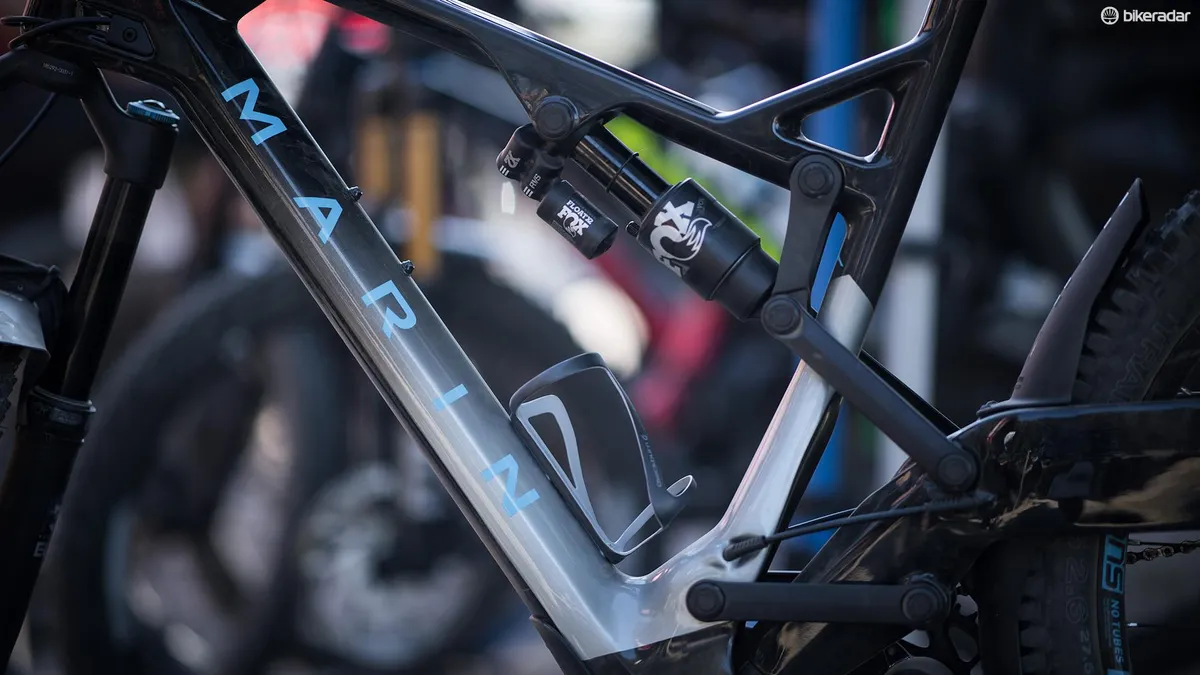
Stan’s Sentry MK2 32mm inner width rims are wrapped in WTB Trail Boss 2.6-inch wide tyres, which were set up tubeless on my test bike. The drivetrain’s a pick-and-mix of SRAM’s GX, X01 and Descendant 12-speed Eagle parts. Shimano’s XT 4-piston brakes slow you down.
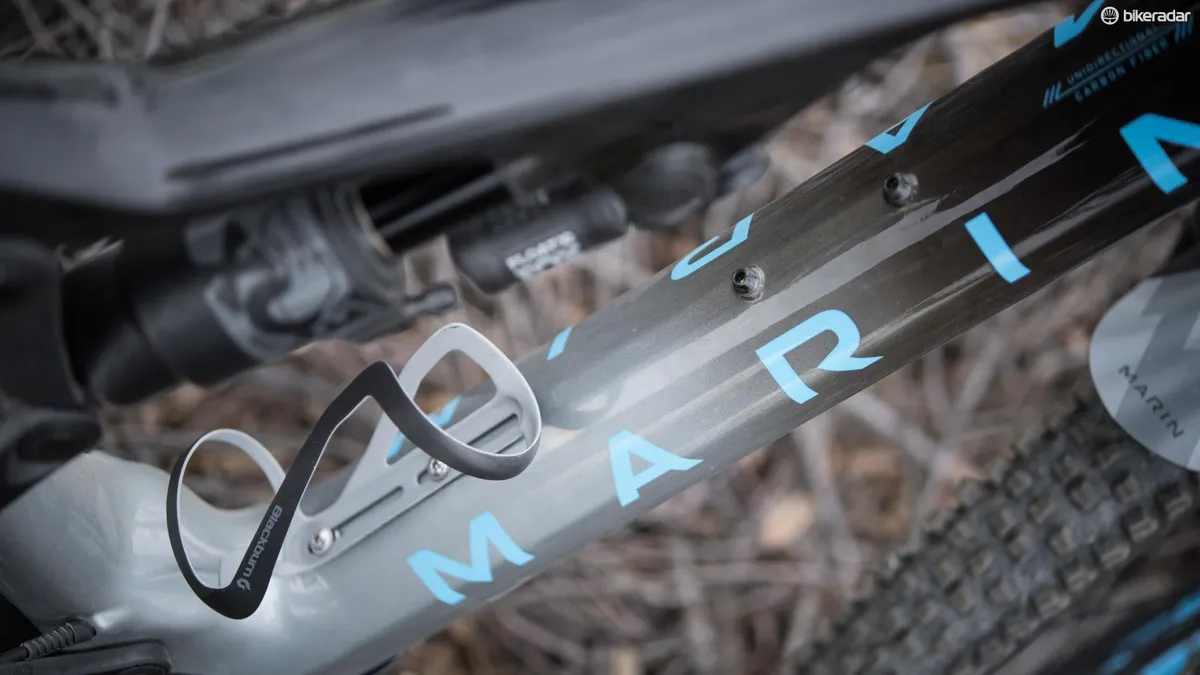
There’s a KS Lev Integra dropper with 150mm of travel, except for the small size bike that gets the same post with a 125mm drop. Taking care of the cockpit is Deity’s Skyline 25mm rise, 787mm wide bars and a Deity Copperhead 35mm stem.
Marin Mount Vision 9 ride impressions
I was lucky enough to be invited to Bike Connection’s winter event in Massa Marittima in Tuscany, Italy. Blessed with beautiful weather and long, rocky and exceptionally varied dry and dusty trails it was easy to find terrain that pushed the new Mount Vision up to its limits.
At first glance, the bike's looks do divide opinion and no matter what you think, it's fair to say that it has a unique aesthetic. But you’d be a fool if you judged this particular frame on its looks alone.
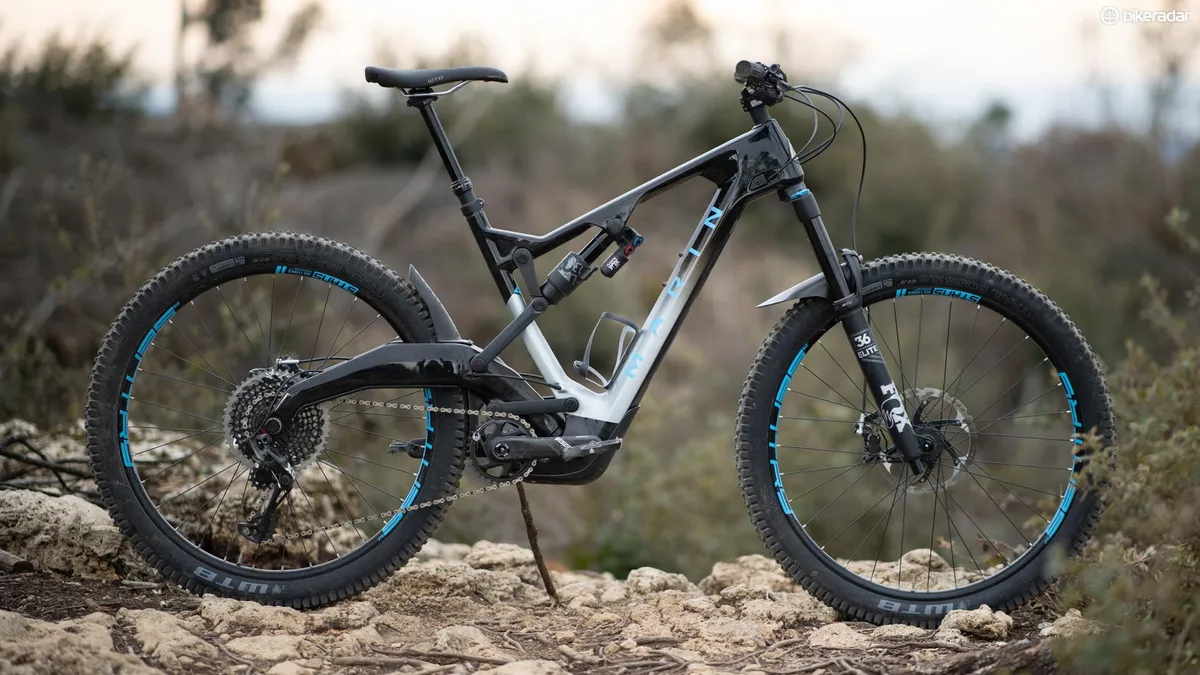
The bike’s silhouette makes it seem deceivingly short with a slack seat tube angle, but if you concentrate on where the bottom bracket and virtual seat tube are, it actually appears much more balanced.
For the bike’s intended use, the geometry numbers seem perfectly adequate, but it would always be nicer to see slacker head tube angles and steeper seat tube figures — something I think brands will slowly introduce over time — considering the bike is designed to be climbed to the top of trails as well as ridden downhill in anger.
I’ll openly admit that this bike had me puzzling for quite some time. I struggled to work out how to make the connection between its bump-guzzling performance and the technical theory behind it. After racking my brains and coming close to a nuclear meltdown, the penny started to drop.
Initial impressions mean a lot and, in this instance, it worked in the bike’s favour that I started out on a bumpy and technical climb. The super-solid pedalling platform doesn’t seem to compromise or affect bump absorption even when the chain and suspension are under tension from hard pedal strokes.
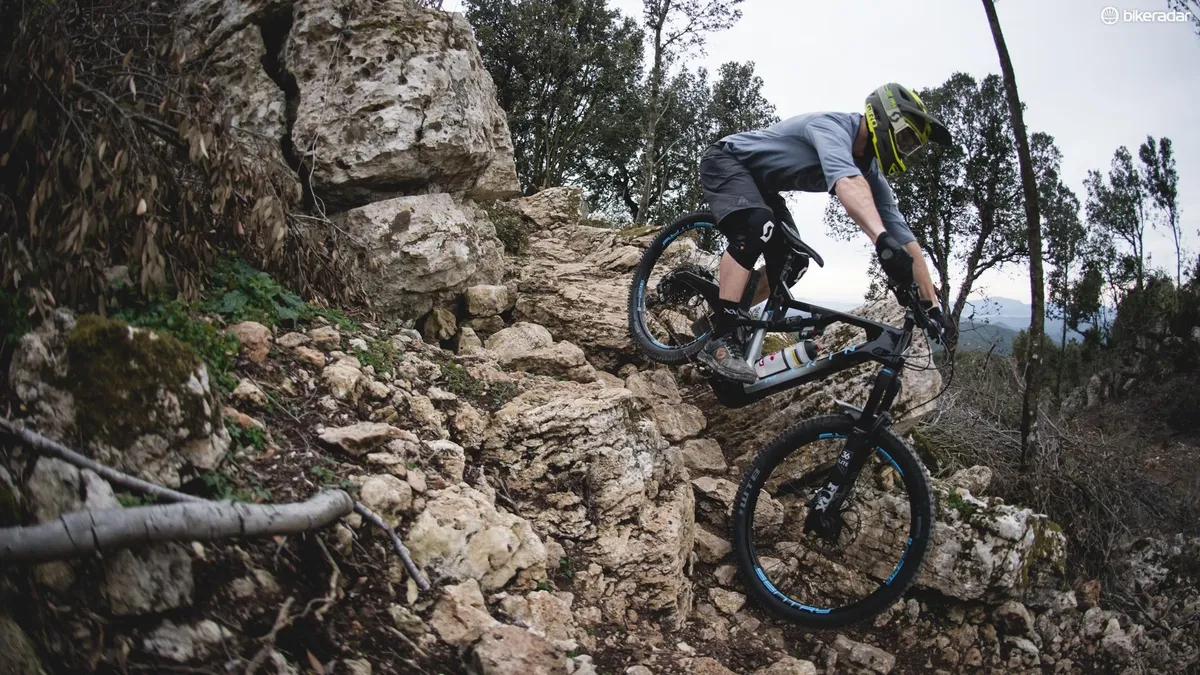
It feels fairly uncanny that the bike’s suspension doesn’t rise, nor does it squat under power. Instead, pedalling efforts are noticeably transferred into forwards momentum up the trail, and this level of efficiency is a relatively unique feeling.
The bike is miraculously smooth when you’re climbing or cruising, but it doesn’t offer that same ride deeper into the travel, feeling more akin to virtual pivot suspension systems found on other bikes.
For example, if you’re an especially lazy rider and, while seated, don’t unweight the bike over larger more aggressive bumps you’ll get the customary kick up the arse from the saddle as the suspension reaches the end of its ability to do all of the work for you.
Descending is a whole new experience for me and it took quite a few laps to understand and fully appreciate what the bike was and wasn’t doing beneath me.
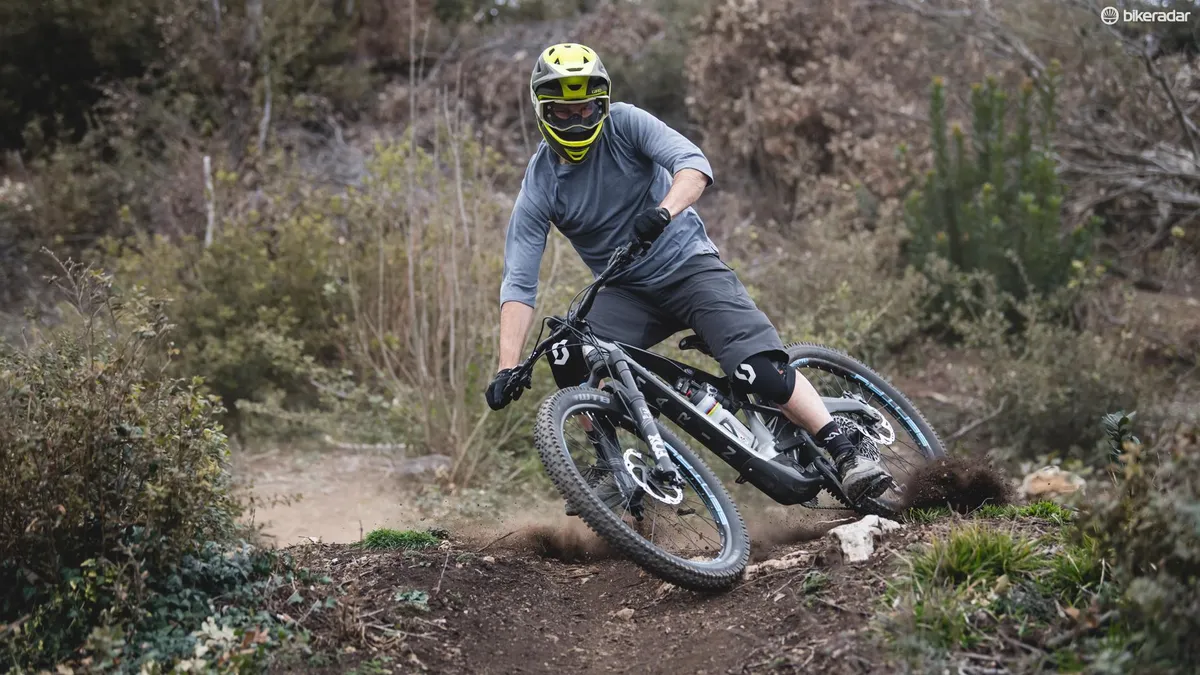
After spending a considerable amount of time riding different trails and terrains, I felt like I better understood how the bike rides.
The overall feeling the bike gives is calm and settled, with a distinct resistance to becoming severely unsettled even with careless line choice or brazen efforts to get it to feel out of its depth. It is impressive stuff.
The chassis feels stable and comfortable and the bike refuses to dive excessively into its travel in turns or through deep holes. Instead, it supports you giving plenty to push against for more speed.
Considering there is little to no compression damping on the bike — I was running the rear shock’s slow-speed compression adjuster fully open and with less pressure and more sag than I’d normally use — this support took me by surprise and is entirely linked to the bike’s design where the slider is compensating for the rider’s weight transfer.
The suspension is good at working hard in an imperceptible way beneath you, akin to a swimming swan where all of the action is happening below the water and it’s a rather serene and calm scene on the surface. This means the bike rides in a rather flat way, but that’s not a bad thing.
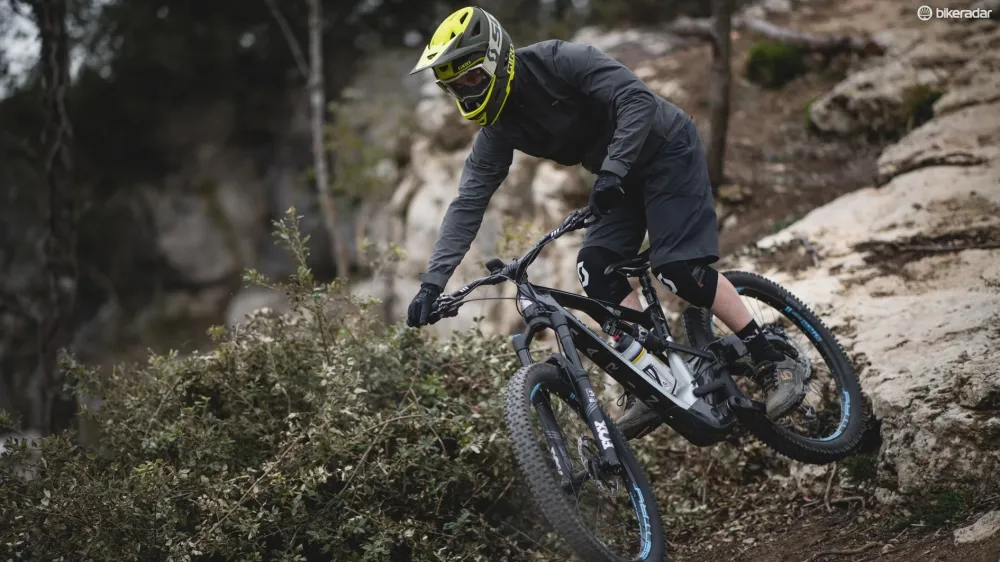
In corners, the low bottom bracket (330mm) and sort chainstay length (420mm) mean the bike is comfortable and easy to lean over while offering exceptional grip, even on the very square, stock, WTB Trail Boss 2.6-inch tyres.
I did feel that the WTB tyres were a bit of red herring, at times reducing my trust in the bike on flat turns that require high lean angles at slower speeds. I was lucky enough to try another set of tyres on the bike.
Changing out the 2.6 WTBs for a set of rounder and narrower 2.4-inch Vee Tire Co SNAP WCE made a world of difference, increasing my ability to lean the bike over on flat turns without experiencing the cliff-edge grip difference of the square WTBs.
I didn’t notice any suspension bind or front to back flex that created vagueness in turns or disrupted and hindered the suspension. Even when the bike is extremely leant over on its vertical axis, for example through corners or on off-camber sections, the suspension remains smooth.

This lack of flex was also apparent when you grab the front and back of the bike with two hands and intentionally push them in different directions. The inclusion of the additional upper swing link has stiffened the rear of the bike considerably compared to the Wolf Ridge.
Despite the calm ride, it’s possible to ride the bike with aggression and speed and if you want to schralp, cutty or slash your way down the trail it’s entirely possible. That’s the beauty of a neutral bike, you can ride it exactly how you want to.
It is certainly worth noting that the frame's suspension platform is best matched to forks with top-of-the-line dampers, such as Fox's GRIP2 or the RockShox's RC2, to help reduce front-end dive. With such a supportive and well-mannered rear end a more basic damper could get overwhelmed and totally upset the balance of the ride.
Marin Mount Vision 9 early verdict
A great, calm and poised bike that’s got an uncanny pedalling platform and an impressive ability to eat bumps for breakfast, lunch and dinner.
